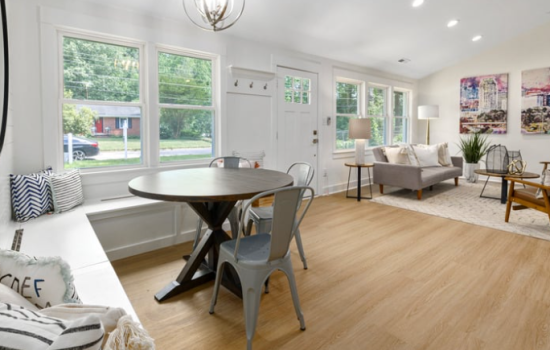Investing in a House in Multiple Occupation (HMO) can be a lucrative opportunity for real estate investors. With the increasing demand for affordable housing and shared accommodations, HMOs provide a great way to generate rental income.
However, financing such a venture can be complex, and understanding the intricacies of HMO mortgages is essential for success. In this comprehensive guide, we will explore what HMO mortgages are, how they work, and the key factors to consider when obtaining one.
Understanding HMOs

Before delving into HMO mortgages, let’s first understand what an HMO is. An HMO is a commercial property that houses multiple tenants who share common areas, such as a kitchen or bathroom.
These properties can range from large houses divided into individual rooms to purpose-built HMOs. They are particularly popular among students, young professionals, and individuals seeking affordable accommodation.
An HMO mortgage is a type of home loan specifically designed for properties that fall under the HMO category. These mortgages differ from traditional residential mortgages as they take into account the unique nature of HMO properties and the associated risks.
Lenders offering HMO mortgages consider factors such as the property’s size, location, rental income potential, and licensing requirements when determining the loan terms.
The Benefits of HMO Mortgages

Investing in HMO properties can provide several advantages, and obtaining an HMO mortgage can help unlock these benefits. Here are a few key advantages of using HMO mortgages for financing your investment
- Higher Rental Yields: HMO properties tend to generate higher rental yields compared to standard buy-to-let properties. With multiple tenants paying rent, the overall income from an HMO can be significantly higher, making it the best investment option for landlords.
- Diversification: Owning an HMO property allows you to spread the risk across multiple tenants. If one tenant leaves, the income from the remaining tenants can help mitigate any potential loss.
- Flexibility: HMO mortgages provide flexibility in terms of loan amounts and repayment options. Lenders understand the unique income streams associated with HMO properties and are often more willing to accommodate borrowers.
- Capital Appreciation: Well-maintained and strategically located HMO properties have the potential for capital appreciation over time. This means that not only can you earn rental income, but you may also benefit from an increase in the property’s value.
Key Considerations for HMO Mortgages
When exploring HMO mortgage options, there are several factors you should keep in mind to ensure a successful investment. Let’s take a closer look at these considerations:
- Licensing and Legal Requirements: HMO properties often require specific licenses and must comply with local regulations. Before securing an HMO mortgage, ensure that your property meets all the necessary legal requirements to operate as an HMO.
- Property Location: The location of your HMO property is crucial. Research the local demand for shared accommodation and consider factors such as proximity to educational institutions, transport links, and amenities. A well-located property can attract tenants and provide a steady stream of rental income.
- Cash Flow Analysis: Conduct a thorough cash flow analysis to determine whether the rental income generated from the property is sufficient to cover the mortgage repayments, maintenance costs, and other associated expenses. It’s crucial to have a realistic projection of your potential income and expenses to assess the profitability of your investment.
- Lender Selection: Choosing the right lender for your HMO mortgage is vital. Look for lenders experienced in HMO financing who understand this type of investment’s unique challenges and opportunities. Compare interest rates, loan terms, and additional fees to find the best fit for your needs.
How to Apply for an HMO Mortgage?

Applying for an HMO mortgage follows a similar process to traditional mortgage applications. Here are the general steps involved:
- Gather Documentation: Prepare all the necessary documentation, including proof of income, property details, bank statements, and any other financial information required by the lender.
- Seek Professional Advice: It is highly recommended to seek advice from a mortgage broker or financial advisor who specializes in HMO mortgages. They can guide you through the process, help you find suitable lenders, and negotiate favourable terms on your behalf.
- Submit your Application: Complete the mortgage application form and submit it along with the required documents to your chosen lender. Ensure that you provide accurate and detailed information to increase your chances of approval.
- Underwriting and Approval: Once the lender receives your application, they will conduct a thorough assessment of your financial situation, the property’s viability, and your ability to repay the loan. If all goes well, you will receive a formal mortgage offer.
- Completion and Repayment: After accepting the mortgage offer, you will proceed to complete the purchase of the property. Once the mortgage is in place, you will make regular repayments as per the agreed terms.
Conclusion
Investing in HMO properties can be rewarding, and securing an HMO mortgage is crucial in financing your investment.
By understanding the unique aspects of HMO mortgages, considering key factors, and following the necessary steps, you can maximize the potential of your HMO property and generate a steady income stream.
Remember to consult with professionals, conduct thorough research, and make informed decisions throughout the process to ensure a successful HMO investment.







